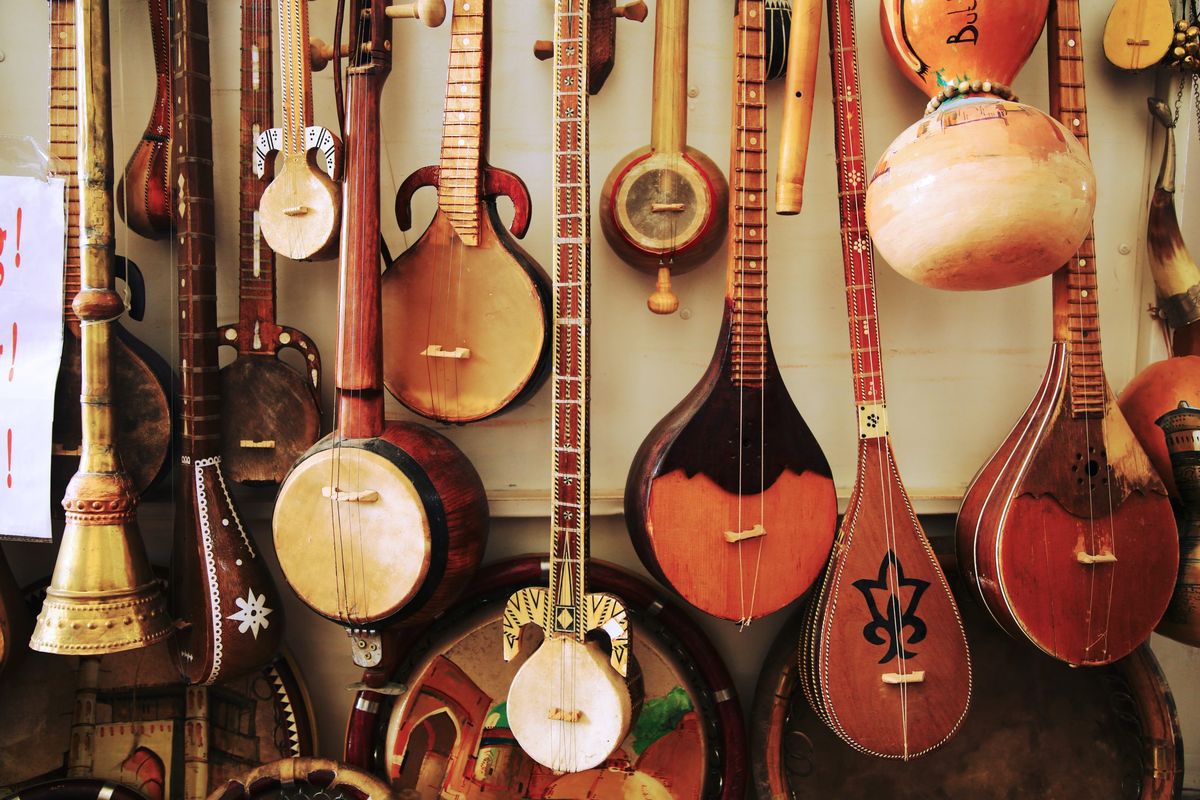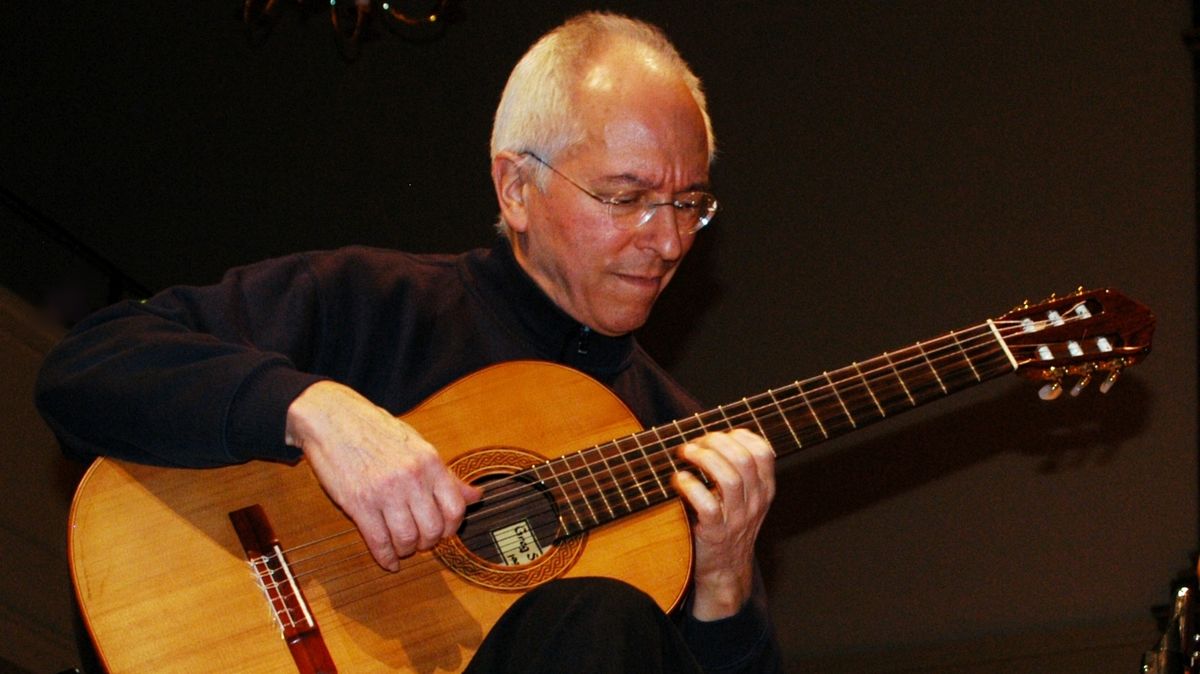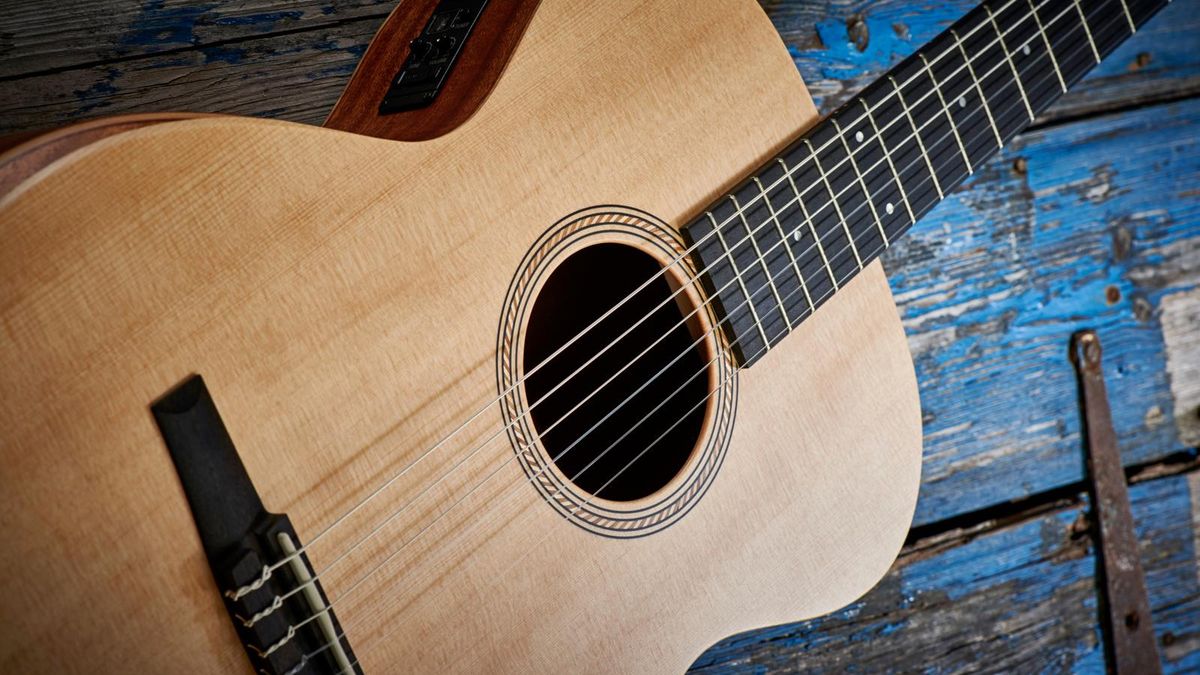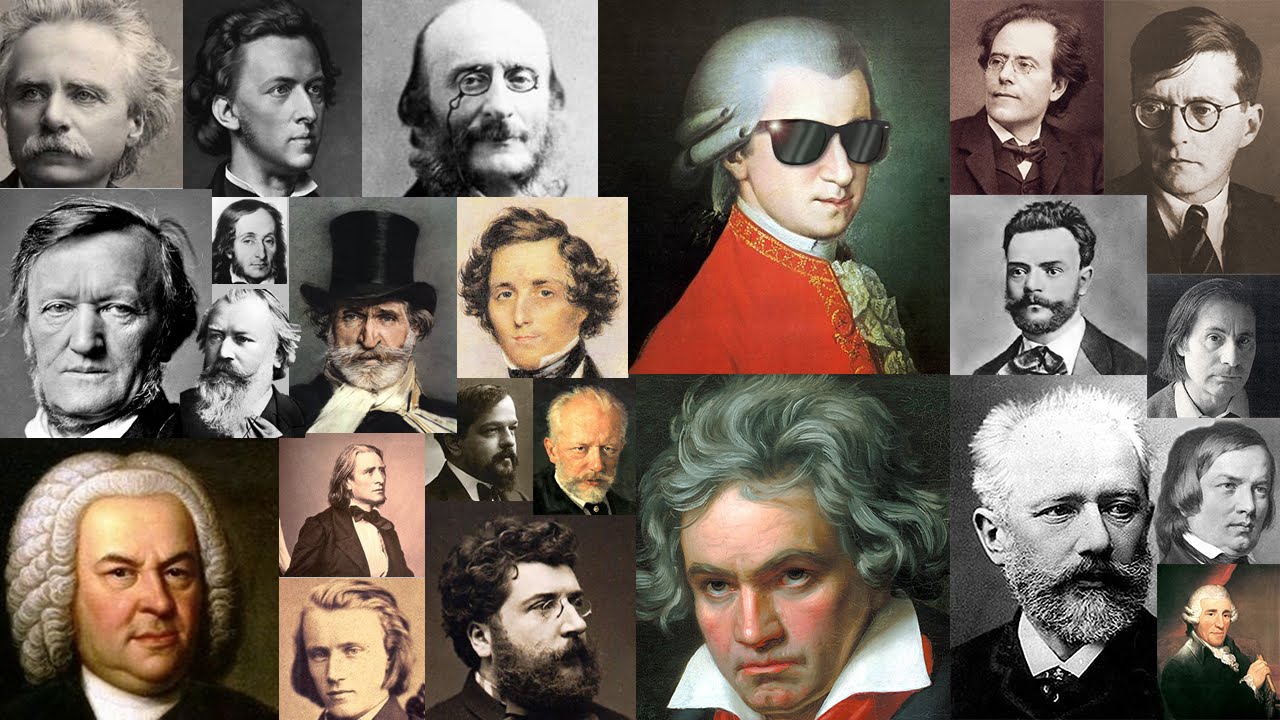

Classical
What Is Classical Music?
Modified: February 24, 2024
Discover the timeless beauty of Classical music, its rich history and influential composers. Immerse yourself in the intricacies of this cherished genre and elevate your musical experience.
(Many of the links in this article redirect to a specific reviewed product. Your purchase of these products through affiliate links helps to generate commission for AudioLover.com, at no extra cost. Learn more)
Table of Contents
- Introduction
- The Origins of Classical Music
- Characteristics of Classical Music
- The Different Periods of Classical Music
- Famous Composers of Classical Music
- Instruments Used in Classical Music
- The Impact and Influence of Classical Music
- Classical Music in Popular Culture
- Criticisms and Controversies Surrounding Classical Music
- Conclusion
Introduction
Classical music is a genre of music that has a rich and storied history. It is a genre that spans centuries and has influenced countless composers, musicians, and listeners. From the haunting melodies of Bach to the powerful symphonies of Beethoven, classical music continues to captivate audiences around the world.
Derived from the Latin word “classicus,” which means “first-class” or “of the highest rank,” classical music is often characterized by its complexity, technical skill, and emotional depth. It has been revered as the pinnacle of musical expression and has served as the foundation for many other genres of music.
Unlike popular music, which is often driven by trends and commercial considerations, classical music is rooted in tradition and has its roots in the music of the ancient Greeks and Romans. Over time, it has evolved and developed into a sophisticated art form.
Classical music is known for its adherence to strict compositional rules and its ability to stir deep emotions. It can range from delicate and introspective solo piano pieces to grand orchestral works that fill concert halls with their resounding power.
Classical music has the power to transcend time and speak to the human condition in profound ways. It has the ability to evoke a wide range of emotions, from joy and excitement to melancholy and introspection. Its timeless nature allows listeners to connect with the music on a deep and personal level.
In this article, we will explore the origins and characteristics of classical music, delve into the different periods of classical music, highlight some of the most famous composers in the genre, discuss the instruments used in classical music, examine the impact and influence of classical music on popular culture, and address some of the criticisms and controversies that surround the genre.
Join us on this journey through the captivating world of classical music, and discover why this timeless art form continues to captivate audiences worldwide.
The Origins of Classical Music
Classical music has its roots in the music of ancient civilizations. The ancient Greeks and Romans had a deep appreciation for music and its power to evoke emotions and communicate stories. They laid the foundation for the development of classical music as we know it today.
The music of the ancient Greeks was primarily vocal, accompanied by simple instruments such as lyres and flutes. It often played a significant role in theatrical performances, where it was used to enhance the emotional impact of the stories being told. The Romans, influenced by the Greek civilization, adopted and expanded upon their musical practices.
During the medieval period, sacred music played a central role in religious ceremonies. The chants and sacred songs of this time, known as Gregorian chant, were monophonic and sung in Latin. These chants were composed and sung by monks and served as a means of worship and spiritual reflection.
One of the seminal moments in the history of classical music was the birth of polyphony. Polyphony, the combination of multiple melodic lines, emerged in the late Middle Ages. It allowed for greater complexity and added richness to the musical compositions. This innovation laid the groundwork for the development of harmony, counterpoint, and the intricate compositions that would come to define classical music.
During the Renaissance period, which spanned from the 14th to the 17th century, there was a renewed interest in classical learning and culture. This period saw the flourishing of important composers like Josquin des Prez and Palestrina, who played a crucial role in the development of polyphonic music. Their compositions showcased intricate vocal harmonies and lush melodic lines.
The Baroque period, from the late 16th century to the early 18th century, marked a significant shift in classical music. Composers such as Johann Sebastian Bach and Antonio Vivaldi created complex and highly ornamental compositions that expressed an emotional and dramatic range. The development of new musical forms, such as the fugue and the concerto, contributed to a more structured and elaborate style of music.
The Classical period, which followed the Baroque period, saw the rise of composers like Wolfgang Amadeus Mozart and Joseph Haydn. This era was characterized by balance, clarity, and elegance in musical composition. The symphony, sonata, and string quartet became popular forms of composition during this time.
The Romantic period, spanning from the early 19th century to the early 20th century, was marked by a shift towards more emotional and expressive music. Composers such as Ludwig van Beethoven, Frederic Chopin, and Pyotr Ilyich Tchaikovsky pushed the boundaries of classical music, creating powerful and passionate compositions.
Throughout the 20th century, classical music continued to evolve and incorporate new influences. Composers like Igor Stravinsky, Arnold Schoenberg, and Claude Debussy experimented with new musical forms, tonalities, and harmonies, expanding the boundaries of classical music.
Today, classical music remains a vibrant and influential genre. It continues to inspire and captivate audiences, showcasing the rich musical heritage and evolution that has taken place over centuries.
Characteristics of Classical Music
Classical music is characterized by several distinct features that set it apart from other genres. These characteristics contribute to the unique and timeless nature of classical music.
One of the most notable characteristics of classical music is its emphasis on clarity and balance. Classical composers strive for a sense of order and structure in their compositions. Each musical element – melody, harmony, rhythm, and dynamics – is carefully constructed and balanced to create a cohesive and coherent whole.
Classical music is also characterized by its complexity and technical skill. Composers of classical music often employ intricate and demanding compositional techniques, such as counterpoint and fugue, which require a high level of precision and virtuosity to perform.
Another significant characteristic of classical music is its ability to evoke a wide range of emotions. Whether it is the exuberant joy of a Mozart symphony or the melancholic introspection of a Chopin piano piece, classical music has a remarkable capacity to elicit deep and profound emotional responses from listeners.
Classical music is predominantly instrumental and emphasizes the power and expressiveness of instruments. From the majestic sound of a full symphony orchestra to the delicate nuances of a solo piano, instruments play a central role in classical music compositions.
The use of musical forms is another important characteristic of classical music. Composers often structure their compositions using established forms such as sonatas, symphonies, concertos, and fugues. These forms provide a framework for the development and organization of musical ideas within a piece.
Classical music also places a strong emphasis on dynamics – the variation in volume and intensity throughout a piece. Compositions often feature dramatic contrasts between soft and loud passages, creating a dynamic and engaging listening experience.
Additionally, classical music often incorporates repetition and variation as compositional techniques. Motifs and themes may be introduced and then transformed and developed throughout the course of a piece, creating a sense of unity and continuity.
Lastly, classical music is known for its timelessness. Despite being composed centuries ago, classical music continues to be relevant and appreciated by contemporary audiences. Its enduring beauty and emotional resonance transcend the boundaries of time and place.
In summary, the characteristics of classical music include clarity and balance, complexity and technical skill, emotional depth, emphasis on instruments, use of musical forms, dynamics, repetition and variation, and timelessness. These qualities combine to create a genre of music that is timeless, engaging, and deeply moving.
The Different Periods of Classical Music
Classical music is often categorized into different periods based on stylistic and historical characteristics. These periods represent distinct stages in the development of classical music and are marked by notable changes in musical style, composition techniques, and societal influences.
1. The Baroque Period (1600-1750): The Baroque period was characterized by elaborate and ornamental compositions. Composers of this period, such as Johann Sebastian Bach and George Frideric Handel, created complex contrapuntal music and employed intricate ornamentation. The music of this period often featured harpsichords, organ music, and the development of the concerto and fugue forms.
2. The Classical Period (1750-1820): The Classical period marked a shift towards more balanced and structured compositions. Composers like Wolfgang Amadeus Mozart and Joseph Haydn sought clarity and simplicity in their works. This period saw the rise of the symphony, the sonata, and the string quartet as important musical forms. The music of the Classical period showcased a heightened sense of elegance and balance, with an emphasis on melodic clarity and harmonic structure.
3. The Romantic Period (1820-1900): The Romantic period was a time of emotional expression and dramatic innovation. Composers like Ludwig van Beethoven, Frederic Chopin, and Pyotr Ilyich Tchaikovsky pushed the boundaries of classical music, incorporating rich harmonies, expressive melodies, and larger orchestral ensembles. The music of the Romantic period emphasized individual expression, heightened emotional intensity, and a greater focus on programmatic music, which told stories or depicted scenes through music.
4. The Impressionist and Post-Romantic Periods (Late 19th to early 20th centuries): As the 19th century progressed, composers such as Claude Debussy and Maurice Ravel began to explore new harmonies and tonalities, breaking away from traditional harmonic structures. The music of this period featured dreamlike and atmospheric qualities, with a focus on capturing fleeting impressions and emotions.
5. The 20th and 21st Centuries: In the 20th century, classical music underwent significant experimentation and diversification. Composers such as Igor Stravinsky, Arnold Schoenberg, and John Cage challenged traditional musical conventions and embraced new possibilities in rhythm, harmony, and form. This period saw the emergence of various avant-garde movements, including serialism, minimalism, and electronic music.
Each of these periods brings its own unique characteristics and contributions to the broader spectrum of classical music. The evolution of classical music throughout these periods reflects not only the changing musical tastes and preferences but also the broader social, cultural, and artistic movements of the time.
Understanding the different periods of classical music allows us to appreciate the diverse range of styles, techniques, and emotions that have shaped the genre throughout history. It is a testament to the enduring legacy of classical music that continues to captivate and inspire audiences to this day.
Famous Composers of Classical Music
Classical music has been enriched by the contributions of countless talented composers throughout history. These composers have shaped the course of classical music with their innovative compositions, technical mastery, and profound musical expression. Here are some of the most renowned composers in the genre:
1. Johann Sebastian Bach (1685-1750): Bach is often regarded as one of the greatest composers in classical music history. His compositions showcased intricate counterpoint and harmonic complexity. Famous works include the Brandenburg Concertos, the Well-Tempered Clavier, and the Mass in B minor.
2. Wolfgang Amadeus Mozart (1756-1791): Mozart’s genius is unrivaled, composing masterpieces in various forms, including symphonies, operas, and chamber music. His works, such as Symphony No. 40, Piano Concerto No. 21, and The Marriage of Figaro, are known for their beauty, grace, and technical brilliance.
3. Ludwig van Beethoven (1770-1827): Beethoven’s compositions bridge the Classical and Romantic periods. He revolutionized classical music with his emotional depth, powerful musical statements, and innovative forms. His notable works include Symphony No. 9, Moonlight Sonata, and Fur Elise.
4. Franz Schubert (1797-1828): Schubert’s compositions reflect his lyrical and romantic style, often setting poetry to music. His works range from symphonies and chamber music to art songs (lieder). Noteworthy compositions include Symphony No. 8 (“Unfinished”), Ave Maria, and Trout Quintet.
5. Ludwig van Beethoven (1770-1827): Beethoven’s compositions bridge the Classical and Romantic periods. He revolutionized classical music with his emotional depth, powerful musical statements, and innovative forms. His notable works include Symphony No. 9, Moonlight Sonata, and Fur Elise.
6. Frédéric Chopin (1810-1849): Chopin’s music is known for its poetic and expressive qualities. He was a master of the piano, composing enchanting and technically demanding works. Famous compositions include Nocturnes, Ballades, and his Preludes.
7. Pyotr Ilyich Tchaikovsky (1840-1893): Tchaikovsky’s compositions embrace emotion, lush melodies, and colorful orchestration. His works, such as Symphony No. 5, Swan Lake, and 1812 Overture, remain staples in the classical music repertoire.
8. Johann Strauss II (1825-1899): Known as the “Waltz King,” Strauss was a Viennese composer who popularized the waltz form. His famous compositions include The Blue Danube, Tales from the Vienna Woods, and Die Fledermaus operetta.
9. Claude Debussy (1862-1918): Debussy was a leading figure of the Impressionist movement in music. His compositions challenged traditional tonalities and explored new harmonies and textures. Notable works include Clair de Lune, Prelude to the Afternoon of a Faun, and La Mer.
10. Igor Stravinsky (1882-1971): Stravinsky was a revolutionary composer who pushed the boundaries of musical conventions. His works, including The Rite of Spring, Petrushka, and The Firebird, reflect his innovative use of rhythm, dissonance, and orchestration.
These composers represent just a fraction of the extraordinary talent found in the world of classical music. Their contributions continue to inspire and captivate audiences, making classical music a timeless and treasured art form.
Instruments Used in Classical Music
Classical music showcases the incredible range of instruments that contribute to its rich and diverse sound. From the powerful symphony orchestra to intimate chamber ensembles, classical music features a variety of instruments that play integral roles in bringing compositions to life. Here are some of the key instruments commonly used in classical music:
1. Orchestra Instruments:
- String Section: The string section forms the backbone of the orchestra, featuring instruments such as the violin, viola, cello, and double bass. These instruments produce a wide range of melodic, harmonic, and rhythmic elements.
- Woodwind Section: Comprising instruments such as the flute, oboe, clarinet, and bassoon, the woodwind section provides delicate melodies, vibrant solos, and colorful harmonies.
- Brass Section: The brass section includes instruments such as the trumpet, French horn, trombone, and tuba. These instruments contribute powerful melodies and create dramatic effects with their bold sound.
- Percussion Section: The percussion section consists of instruments like the timpani, snare drum, cymbals, and xylophone. Percussion instruments add rhythmic drive, accents, and texture to orchestral compositions.
2. Keyboard Instruments:
- Piano: The piano is a versatile instrument that can be used in solo performances, chamber music, and as an accompaniment in orchestral compositions. It spans a wide range of dynamics and expresses both delicate and dramatic passages.
- Harpsichord: Though less common in modern classical music, the harpsichord was prevalent during the Baroque period. Its plucked strings and distinct tone color contributed to the music of composers like Bach and Handel.
3. Solo Instruments:
- Violin: The violin is arguably the most iconic solo instrument in classical music. Its expressive and versatile nature allows for emotional melodies and virtuosic performances.
- Cello: With its deep and resonant sound, the cello adds warmth and richness to compositions. It is often featured in solo concerto performances.
- Flute: The flute’s bright and agile tone makes it a versatile instrument in classical music. It is frequently used in orchestral settings and chamber music.
- Trumpet: The trumpet is known for its brilliant sound and ability to soar above an ensemble. It shines in heroic fanfares and majestic orchestral passages.
- Clarinet: The clarinet’s wide range and expressive capabilities make it a popular choice for solos and chamber music. Its rich and mellow tone adds depth to compositions.
- Voice: The human voice, both in solo and choral settings, is a powerful instrument in classical music. Vocal compositions, such as operas, oratorios, and art songs, convey emotional depth and tell stories through lyrics and melodies.
4. Chamber Music Instruments:
- String Quartet: Consisting of two violins, a viola, and a cello, the string quartet is an intimate ensemble that showcases the expressive capabilities of each instrument. It is a popular ensemble in chamber music.
- Woodwind Quintet: Comprising a flute, oboe, clarinet, bassoon, and French horn, the woodwind quintet produces a balanced and diverse combination of timbres.
- Piano Trio: The piano trio features a piano with a violin and cello. This ensemble allows for a delicate interplay between the instruments, highlighting their individual voices within a small group setting.
These are just a few examples of the instruments used in classical music. The combination of these instruments, along with the skillful compositions written for them, creates the rich tapestry of sound that characterizes classical music.
The Impact and Influence of Classical Music
Classical music has had a profound impact on the world of music and beyond. It has influenced the development of various musical genres, cultural movements, and even technological advancements. Its enduring legacy continues to shape and inspire generations of musicians and listeners. Here are some key aspects of classical music’s impact and influence:
1. Musical Exploration and Innovation: Classical music has served as a platform for musical exploration and innovation. Composers like Beethoven, Mozart, and Bach pushed the boundaries of musical conventions, introducing new forms, harmonies, and compositional techniques. These advancements laid the foundation for future musical styles and genres.
2. Evolution of Music Education: Classical music has played a significant role in music education. The study of classical music allows students to develop essential musical skills, including sight-reading, ear training, and understanding musical structure. The discipline and technical proficiency required in classical music performance have influenced the pedagogy of music education.
3. Cultural Significance: Classical music has been ingrained in the cultural fabric of societies throughout history. It has served as a reflection of cultural values, traditions, and historical events. The works of composers like Verdi, Wagner, and Tchaikovsky have become national treasures, defining the cultural identity of their respective countries.
4. Influence on Other Musical Genres: Classical music has had a significant impact on various genres of music. Elements of classical music can be found in jazz, pop, rock, and film music. Composers often draw from classical music traditions, incorporating techniques such as orchestration, complex harmonies, and melodic development into their compositions.
5. Inspiring Emotional Expression: Classical music possesses an exceptional ability to evoke emotions and provide a platform for emotional expression. Its intricate melodies, harmonic progressions, and dynamic contrasts resonate deeply with listeners, eliciting joy, sadness, excitement, and introspection. Classical music offers a range of emotional experiences that connect people across time and cultures.
6. Technological Advancements: The recording and reproduction of classical music have driven advancements in audio technology. The development of recording techniques has allowed classical music to be preserved, disseminated, and enjoyed by a wider audience. These technologies have also influenced the live performance experience, enhancing acoustics and amplification.
7. Inspiration for Film and Media: Classical music has played a prominent role in film soundtracks, television programs, and advertisements. Its emotional power and ability to enhance storytelling have led directors and producers to incorporate classical compositions into their visual media, further extending its reach and influence.
8. Intellectual and Academic Stimulus: Classical music provides intellectual stimulation and provokes thought. Its intricate compositions invite analysis and interpretation, making it a subject of study in musicology, music theory, and music history. The study and appreciation of classical music contribute to cultural and intellectual enrichment.
Overall, classical music’s impact and influence go beyond the realm of music. It has shaped the cultural landscape, inspired creative expression, and contributed to the technological advancements in audio reproduction. Classical music continues to be cherished for its enduring beauty, emotional depth, and capacity to connect people across time and space.
Classical Music in Popular Culture
Classical music has made a significant impact on popular culture, transcending the boundaries of the traditional classical music scene. Its timeless melodies and emotional depth have been embraced by popular media, influencing films, commercials, and even popular music genres. Here are some ways classical music is represented in popular culture:
1. Film and Television: Classical music has been utilized in countless films and television shows to enhance emotional impact and enhance storytelling. Pieces by composers like Mozart, Beethoven, and Tchaikovsky have been featured in iconic movie scenes, creating memorable and powerful moments. From the dramatic opening of Mozart’s Symphony No. 25 in “Amadeus” to Beethoven’s “Ode to Joy” in the finale of “Die Hard,” classical music brings a sense of grandeur and deep emotion to screen productions.
2. Advertising and Commercials: The beauty and emotional resonance of classical music have made it a popular choice for commercials and advertisements. Companies use classical compositions to evoke a sense of elegance, sophistication, and nostalgia. Whether it is a car commercial set to the soaring melodies of Wagner’s “Ride of the Valkyries” or a perfume advertisement featuring Debussy’s “Clair de Lune,” classical music adds a layer of refinement and artistic appeal to the advertising world.
3. Sampling in Popular Music: Classical music has also found its way into popular music genres through sampling. Artists such as Kanye West, Wu-Tang Clan, and Nas have integrated classical music excerpts into their songs, blending classical melodies with modern beats and lyrics. This fusion has introduced classical music to new audiences who may not have otherwise sought it out.
4. Video Games: Classical music has become a staple in the realm of video game soundtracks. The powerful and sweeping symphonies of composers like Nobuo Uematsu and Jeremy Soule have become iconic in popular franchises such as Final Fantasy and The Elder Scrolls. Classical compositions can elevate the immersive experience of gaming, drawing players into epic adventures and emotional narratives.
5. Concerts and Events: Classical music performances have taken on a more contemporary and accessible format, appealing to a wider audience. Orchestras and ensembles have begun programming crossover concerts that feature classical music alongside popular and modern genres, bridging the gap between classical and popular culture. Additionally, outdoor concerts and festivals featuring classical music draw crowds of all ages and backgrounds, showcasing the universal appeal of the genre.
6. Pop Culture References: Classical music often finds its way into popular culture through references in books, television shows, and other forms of media. From humorous parodies to intellectual discussions, classical music is embedded in everyday life conversations and popular discourse. Whether it is the iconic “da-da-da-dum” of Beethoven’s Symphony No. 5 or the whimsical arpeggios of Chopin’s “Raindrop Prelude,” these references keep classical music alive in the collective consciousness.
Classical music’s presence in popular culture serves to bridge the gap between seemingly separate worlds. It introduces classical compositions to new audiences, enriches the cultural fabric of popular media, and showcases the timelessness and universal appeal of this extraordinary genre of music.
Criticisms and Controversies Surrounding Classical Music
While classical music holds a revered status in the world of music, it is not immune to criticism and controversy. Over the years, various aspects of classical music have drawn scrutiny and sparked debates. Here are some of the common criticisms and controversies surrounding classical music:
1. Perceived Elitism: One criticism often leveled against classical music is its perception of exclusivity and elitism. The genre is sometimes seen as being enjoyed and appreciated only by a privileged few, with barriers of access and understanding that discourage broader engagement. This perception has led to efforts to make classical music more inclusive and accessible to a wider audience.
2. Lack of Diversity: Classical music has been criticized for its historical lack of representation and diversity, both in terms of composers and performers. The works of composers from marginalized backgrounds have often been neglected, and women and people of color have been underrepresented in the classical music world. Recent efforts have aimed to address this imbalance and provide platforms for a more diverse range of voices.
3. Eurocentric Bias: Classical music has historically been centered on the Western European tradition, leading to accusations of a Eurocentric bias. Critics argue that this focus overlooks the rich musical heritage of other cultures and contributes to the marginalization of non-Western musical traditions. Efforts are being made to embrace a more global perspective and incorporate diverse musical influences.
4. Stagnation and Repetition: Some critics assert that classical music has become stagnant and overly reliant on familiar works. They argue that the genre needs to embrace more contemporary compositions and break free from the repetition of the same canonical pieces. This criticism has led to the promotion of new music and the exploration of less-known composers and lesser-performed works.
5. Accessibility and Relevance: Classical music has faced criticism for its perceived lack of relevance to contemporary society. The complex musical structures and formal traditions can be seen as inaccessible and disconnected from everyday experiences. There is an ongoing push to make classical music more relevant by exploring contemporary themes and incorporating new technologies and innovation.
6. Authenticity and Interpretation: Authenticity in performing classical music is a subject of debate. Controversies arise over the interpretation and execution of works, with differing views on how faithfully a piece should adhere to the composer’s intentions. This debate touches on issues such as historical performance practice, stylistic interpretation, and the balance between personal expression and fidelity to the score.
7. Financial Sustainability: The financial sustainability of classical music institutions has been a topic of concern. Rising production costs, declining attendance, and the challenge of attracting younger audiences pose significant challenges to classical music organizations. The need to strike a balance between artistic integrity and financial viability is an ongoing issue.
It is important to note that these criticisms and controversies are not unique to classical music but are part of a broader dialogue surrounding any artistic discipline. They reflect a continuous process of reassessment and growth, with efforts to address these concerns and ensure the continued vibrancy and relevance of classical music in a changing world.
Conclusion
Classical music, with its rich history, technical brilliance, and emotional depth, occupies a prominent place in the world of music. It has inspired generations of composers, shaped the development of various musical genres, and left an indelible mark on popular culture. Despite criticisms and controversies, classical music continues to captivate audiences and serve as a timeless art form.
From its origins in ancient civilizations to its evolution through different periods, classical music has undergone significant transformations but has managed to preserve its core characteristics. Its adherence to compositional rules, emphasis on clarity and balance, and ability to evoke a wide range of emotions make it a unique and captivating genre.
Famous composers such as Bach, Mozart, Beethoven, and countless others have left a lasting legacy of remarkable compositions that continue to be cherished and performed to this day. These composers, along with the myriad of talented musicians who interpret their works, have shaped the landscape of classical music and contributed to its enduring appeal.
Classical music’s influence extends beyond the concert hall. It has seeped into popular culture, appearing in films, commercials, and even popular music genres through sampling and adaptations. Its timeless melodies and emotional resonance have endeared it to a wide range of audiences, bridging the gap between the classical music world and the broader public.
While classical music is not without its criticisms and controversies, these conversations bring about necessary reflections and necessary changes. Efforts to make classical music more inclusive, diverse, accessible, and relevant have led to exploration of new compositions, a broader repertoire, and the amplification of marginalized voices.
In conclusion, classical music will forever hold a cherished place in our cultural heritage. Its impact on music education, its cross-genre influence, and its ability to inspire profound emotions in listeners make it an art form that continues to evolve and resonate with people around the world. As we appreciate the beauty and complexity of classical music, we must also embrace its potential for growth and adaptation, ensuring that it remains a vibrant and relevant part of our artistic landscape for generations to come.











